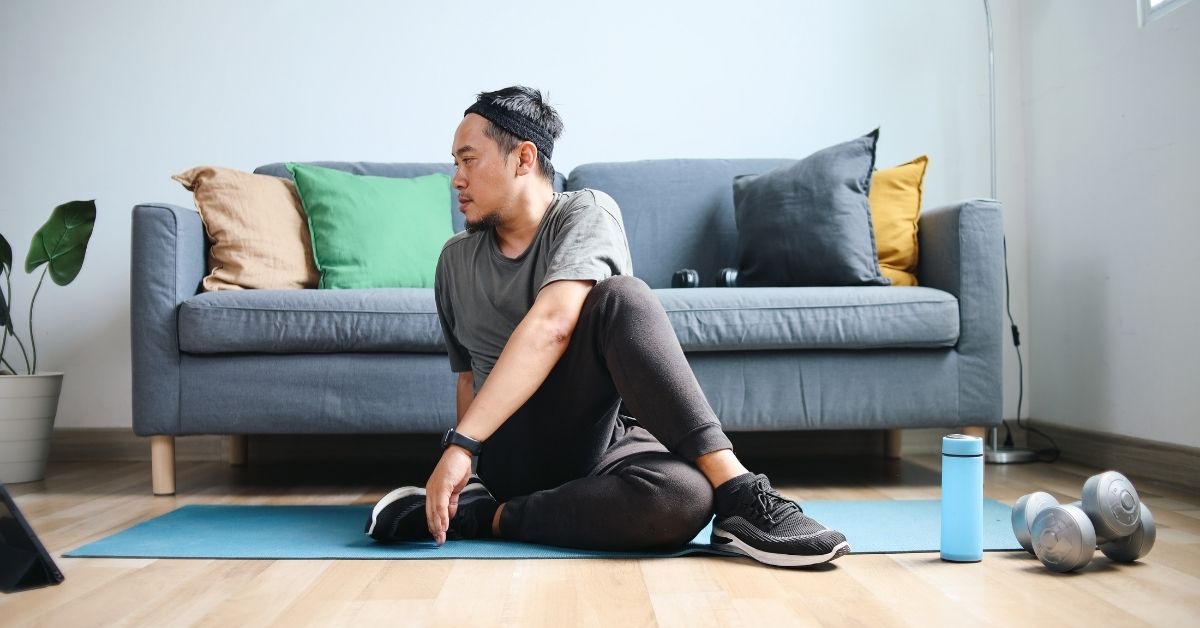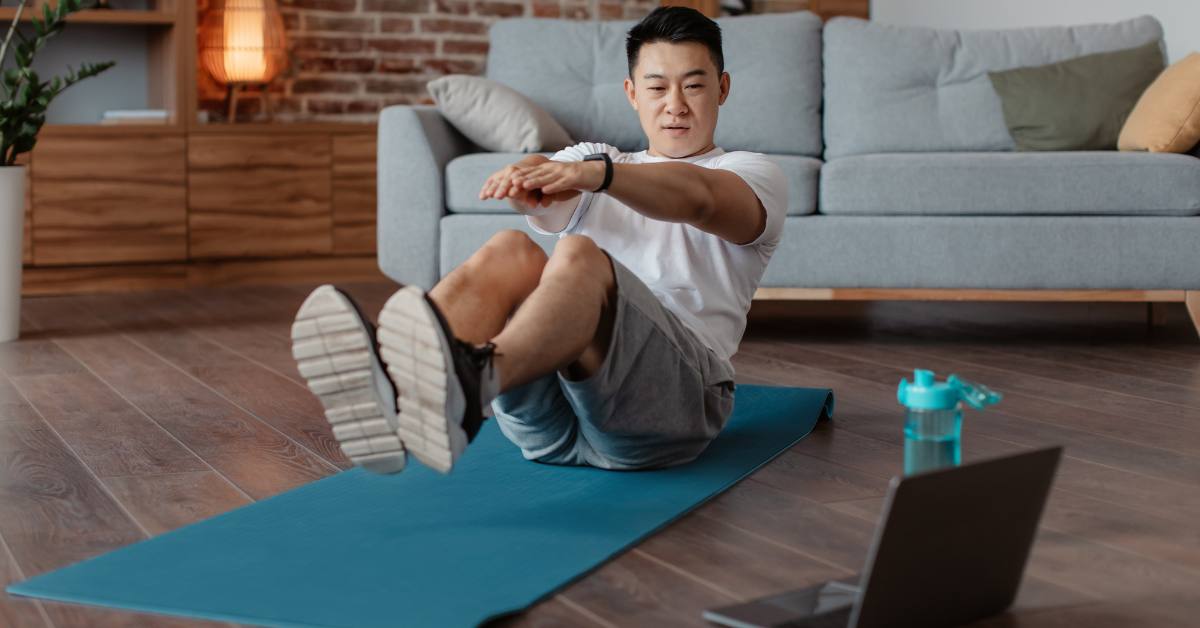I was a fairly sporty high school student, but maintaining an active lifestyle became challenging when I attended the University of Toronto to pursue a Bachelor’s degree in psychology.
Like many young people, my schedule was packed with studies, a part-time job, and a social life that didn’t always prioritize being physically active. To top it all off, I injured my back while working a summer job and pushing through it (like so many young men unfortunately do).
That injury became a major turning point. While undergoing physiotherapy, I noticed improvements in my thinking and mood whenever treatments got me moving. This led me to pursue a PhD in kinesiology focusing on the impacts of physical activity on mental health.
Fast-forward four years, and now I am a data scientist with ParticipACTION, doing my best to help people in Canada make room to move in their daily lives. I’ve learned that exercise isn’t just about physical health; it’s also a powerful tool for reducing stress and thinking more clearly.
The mood-exercise connection
Your moods, emotions and feelings are all important signals, like pain, hunger, and taste. Feeling irritable, anxious, or upset may tell you something is standing between you and your goals. Feeling sad or low might tell you that you’ve lost something or someone important to you and that you need to reflect before your next steps.
When you feel these ways, your body releases stress hormones like cortisol and adrenaline. These hormones are intended to help you overcome obstacles by using the physical energy—like carbs and fat—that your body keeps in storage. This is useful when the threat is physical, like trying to outrun a bear or knowing to seek shelter during a storm, but it can cloud your judgment when trying to navigate the challenges of modern work and social relationships.
Physical activity is one of the most productive ways to redirect challenging feelings, harness excess energy, and boost hormones and neurotransmitters (your body’s chemical messengers) like dopamine, serotonin, and endorphins in the brain. These natural mood boosters help you feel calmer, happier, and more focused.
Studies show that a short burst of exercise—as little as 10 to 15 minutes—can improve your mood after you’ve worked out. Even if you don’t always feel great in the middle of an intense session. Some initial post-workout energy will disappear as time passes, but positive feelings often remain after exercise.

The image above is a simple model for understanding emotions. It breaks them down into a combination of how positive or negative you feel and how energized or alert you are. Things like anger and anxiety can be considered high-energy, negative emotions while feeling calm is a more reserved, positive emotion.
Finishing a bout of exercise has been shown to move peoples’ emotions towards more high-energy positive feelings than before they started. As time passes, feelings tend to stay positive but become calmer.
ParticipACTION’s “Feel It to Fuel It” campaign encourages you to acknowledge your emotions and use them as motivation to get physically active. Feel your emotions and use them to fuel your physical activity. Cry while you run, dance out your anxiety or go on a peaceful walk to figure out what’s bugging you. I can’t count the number of big decisions I’ve made after sweating it out on a stationary bike.
Feeling it to fuel it is not just about negative emotions. Feeling happy is also a great reason to get moving, so lean into that emotion, celebrate your body, and keep the party in your head going!
Proof that moving your body boosts your mood

Getting in some exercise is a great way to change how you feel right now, but how can you use that to improve other areas of your life?
Being consistently active throughout the week can help keep your mood in that positive emotional space, and research has shown that regular physical activity can help prevent more serious mental health problems like clinical depression and dementia.
Many researchers are studying the mental health benefits of physical activity. There’s even an entire scientific journal devoted to that topic! Interesting findings so far include:
- Physically active people are more satisfied with their lives and feel happier.
- People report feeling calmer and less stressed immediately after exercise.
- Engaging in physical activity before a stressful task can reduce the negative impact it has on your emotions.
- 20 to 30 minutes of exercise can help make tough decisions and complex problems easier to think through.
- Exercise boosts self-esteem.
- People with major depression disorder and anxiety disorder report less stress and better mood overall from just 20 to 30 minutes of exercise.
- Resistance training, like weightlifting, has proven to have immediate and long-lasting positive effects on your mental health by reducing feelings of anxiety and/or feelings of depression.
Canada’s 24-hour Movement Guidelines recommend that all adults get 150 minutes of moderate-to-vigorous activity every week to maintain physical and mental health. Two and a half hours can seem like a lot to fit in when you’re already busy, but there are many ways to work towards this goal. Whether you’re scheduling workouts or fitting in brisk walks as part of your commute, every minute of movement that elevates your heart rate counts!
Signs it’s time to get moving

Sometimes, it’s very apparent that you need to get moving, like when you’re restless after sitting all day. Other times, the signals are more subtle.
Here are some common mood cues that may indicate it’s time to exercise:
- Irritability or frustration
- Low energy or feeling “blah”
- Losing interest in things you once enjoyed
- Anxiety, restlessness, or difficulty focusing
- Withdrawing from relationships
- Feeling stuck, sad, or overwhelmed
While using feelings as motivation to exercise is a great way to help you work through the bad moods we all experience from time to time, running a 5k isn’t going to be a cure for more serious mental health concerns. As someone who believes strongly in the power of exercise, I’ve still had to have tough conversations about focus, anxiety and feelings of depression with my health team.
If any of the feelings listed above have been consistent or are causing issues in your life, it’s important to talk to your doctor.
How to ‘Feel it to Fuel it’ with a busy schedule
Think of exercise like brushing your teeth: small, regular efforts matter. Combine that approach with the following tips, and you’ll be surprised how easily you can make room to move.
Add it to your calendar: Prioritize it like a doctor’s appointment. If bad weather disrupts an outdoor activity, have an alternative indoor workout ready.
Focus on enjoyment: Choose activities you love, whether walking/wheeling, dancing, or playing a sport.
Do it with other people: Exercising with another person or a group makes it easier to feel motivated and more enjoyable. Finding free or affordable classes at recreation centres is a low-cost way to meet other people trying to stay active.
Use videos and resources to guide you: Planning out a whole workout can feel daunting when you’re already struggling. Following videos from ParticipACTION.com, the Nike Training Club app, the YMCA at home, or certified trainers are simple ways to remove the effort of planning or shake things up when your routine feels stale. Try this short 3-minute desk job reset workout.
Use technology: Fitness trackers and apps can help with consistency and show your progress while providing gentle reminders to move.
Have a “go-to” workout: Find a 10-minute routine you can return to whenever you need a quick mood boost or are short on time. For quick access, keep a list of these workouts in your phone’s notes or bookmarked in an app.
Start small and celebrate wins: All good activity plans start small and build on past successes. Plan healthy rewards for completing a workout, no matter how short. Positive reinforcement builds consistency.
Listen to your mood: A call to action
Your mood is one of the best indicators of what your body and mind need. By paying attention to how you feel, you can use movement as a simple way to feel better.
The next time you feel out of sorts, step back and ask yourself: Have I moved my body today? If the answer is no, lace up your shoes, grab a friend, or find a quick activity you enjoy. It doesn’t have to be perfect—it only needs to get you moving.
Share your story!
Sharing your story can inspire others to take action. Send the Canadian Men’s Health Foundation a message or video to [email protected], or tag CMHF in a social post (Facebook, Instagram, X) and share how getting more active has helped your mental health.






Let’s Talk!
Did you enjoy this article? Let us know in the comments.
0 Comments